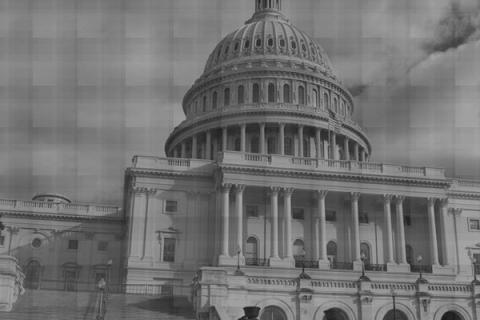Obstacles facing third party candidates for state office have always been great, and for a time seemed all but impossible to overcome in California. As Green Party gubernatorial candidate, Laura Wells relates, “I ran in 2002 and 2006 for State Controller... One effect of running twice was experiencing how much the doors closed to independent parties during those four years.”
However, there is a rising tide of political disenfranchisement expressed through the caffeinated beverage movements that threatens to expose the partisan dichotomy for what it is: a false one. In turn, independent thinking politicians might begin to entertain greater popularity. In the meantime, the candidates who don't accept special interest dollars have significant campaign roadblocks.
I recently had the pleasure of asking several third party candidates in the race for California governor about the problems they have encountered while campaigning outside the two party system. Their concerns were essentially the same, converging under three categories. The following is a compilation of their experiences.
Media Access
This day and age, the “viability” of a political candidate is predicated upon one factor – mainstream media coverage. “Although polls prove that more voters will vote for independent candidates and our campaign site generates more hits than GOP candidate Steve Poizner, competes with Jerry Brown, and about a quarter of Meg’s site hits, the mainstream purposely ignores us,” says Chelene Nightingale, American Independent gubernatorial candidate.
The fact that most print media and television sources only mention the major party contenders in their pieces presents us with a catch-22. The majority of registered voters rely solely on these sources to glean the names and platforms of all who are running. The non-viability of these ignored candidates remains a self-fulfilling prophecy.
It's also rather difficult to oppose your opponent if you can't debate them in a public forum. Access to partisan-controlled debates is extremely limited for these candidates. Perhaps Jesse Ventura's successful 1998 bid for governor of Minnesota as an independent is a precedent feared by Republican and Democratic party leaders. Ventura was included in his state's gubernatorial debates.
Even when independents and major party candidates are on the same stage, though, their allotted speaking time is usually unbalanced. Ms. Wells provides a good example of how the two major parties increasingly dominate air time, even on radio programs dedicated to involving all candidates:
For KQED in 2002 it was an hour show with all the candidates together. In 2006 it was formatted as the first half hour for the Titanics (I use Titanic as shorthand for Democratic or Republican Party)and the second half hour for the independents. For State Controller, the Republican did not show up, so the Democrat had the entire 30 minutes. There were four candidates sharing the second half of the show.
Campaign Finance
Independents must rely on small, diffuse donations from individuals to drive their campaigns. The two-headed leviathan is fed, on the other hand, by corporate donations, union contributions and indirect funding through political action groups. Dale Ogden, Libertarian gubernatorial candidate, shares Laura Well's view that corporate campaign donations are simply low risk, high reward investments in politicians. “The cost is pretty cheap,” says Wells, “whether it's from the multi-billion-dollar corporations or their individual employees. The money buys access, so it's different from supporting only a preferred candidate.” These corporations contribute to both sides, acquire the regulation (or de-regulation) they desire, and pass their business expenses on to the taxpayer.
Furthermore, legislation under the guise of “campaign finance reform” has made the cost of running for office in the golden state higher than it should be, further discouraging outsider bids. In 2002, ballot statements included in the pamphlet sent to registered voters were free. This changed in 2006, when a proposition for campaign reform with various provisions was put forward. Wells' party opposed the measure and for good reason. A majority of voters, with the best of intentions, passed it.
“Ballot statements for the primary and general elections then cost $20 a word. To the Titanic parties it would be nothing, the cost of a high-end fundraising dinner,” laments Wells, “For me, I sent half of my total budget to the Secretary of State - representing REVERSE public campaign finance.” As of now, ballot statements cost $25 a word.
Endorsements
Because of the complexities of political elections and the glut of information voters must process to make the most educated choice, many rely on endorsements to simplify their decision. Obtaining endorsements from high profile groups is difficult for third party candidates in large part because of the social stigma of propping up a candidate who lacks official viability (see mainstream media coverage).
“Endorsements work in very much the same way that media coverage works. They want to endorse 'viable' candidates, and yet their lack of endorsements hurts the viability of candidates, even when the organizations’ values match those of an independent candidate,” Wells elaborates. She points to environmental groups that don't endorse Green Party Candidates as a classic example of this process.
Candidate Nightingale attests, “Groups like ICaucus will not even consider our campaign, although they have admitted I would be the kind of candidate they would 'vet' if I was in the two-party system.”
Add to all of this the fact that major party incumbents fund other candidates within their own parties. Incumbents can rely on a steady flow of campaign contributions as donors want to procure continued access. As the incumbents don't need all of the money to clinch their own seats, a trickle down dynamic begins where smaller, more localized elections are swayed by this largesse.
Independent candidates simply don't have the advantage of a political trust fund.
